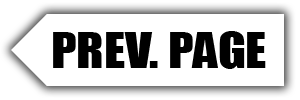
 Is it the right time for this project car?
10 The Hard Way
Is it the right time for this project car?
10 The Hard Way
 was sitting around getting everything out of the trailer and ready for “cold storage” a couple months ago when I had this idea cross what is left of my mind. I spend about four days getting the two race cars we have ready to be stored in the cold weather (no, make that absolutely frigid weather) of Iowa.
was sitting around getting everything out of the trailer and ready for “cold storage” a couple months ago when I had this idea cross what is left of my mind. I spend about four days getting the two race cars we have ready to be stored in the cold weather (no, make that absolutely frigid weather) of Iowa.
I got to thinking about the Good Old Days. Racing season is over, drain the water and fill it with antifreeze. Start the engine and spray fogging oil into the carb until the engine is smoking pretty good and shut it off. Then spin it over without the ignition on and spray about half a can of fogging oil into the carb as it spins over. This coats the valves, valve seats, piston rings and cylinders with a protective coating of oil that will prevent rust. That was all it took to get ready to park the car for about four months. Just 10 minutes and it was done.
Racing a car like that was simpler and far less expensive as well. We used pump gas with a little octane booster in it or maybe a blend of 104-octane race gas. The engine was expected to last three or four seasons before it had to be inspected. The transmissions would sometimes go five or six years with just fluid changes. The rear-end gears were practically a lifetime purchase. Rear slicks were normally good for two years -- but I always put new slicks on every year and am convinced it is the best money you can spend for consistency. I think the time has come to “step back” a little.
 |
| Project “10 The Hard Way; What are the odds” Can we go 10 seconds for $10K? |
I am starting a new project car and a series of tech articles that will be based on making it a drag car that you can build in your driveway without any special fabrication tools. The one item we will have to weld is the roll bar. If you have a mig welder you can do it or it might be something to spend a couple hundred bucks on and get it welded correctly. Other than that this will be a “bolt-together” drag car.
We are starting with a 1984 Firebird that I just bought for $500 -- and I even got a 4” cowl induction hood scoop. It has a used 350 and Turbo 400 in it as well. I am going to try to sell the engine, and the trans is going to Coan Racing for an overhaul and Coan full-manual valve body (no transbrake on this car).
We are going to show you how to install the S&W Race Cars sub-frame connectors and cross-member kit. We will go through what is involved to install a “bolt-in” Strange Engineering 12-bolt rear end assembly. Will these parts be “true bolt-on parts”? Stay tuned to find out.
We will plumb the fuel lines not with braided stainless hose and AN fittings, but rather will plumb the car with 3/8” steel or aluminum line, common compression fittings and some careful planning to end up with an efficient fuel line system for under $100. The fuel pump will not look one off a Pro Stocker as we don’t need that. It will be a standard electric fuel pump that can maintain about 7psi at the finish line.
We have a lot of manufacturers who want to support a project like the 10 – The Hard Way so it should be fun to build this car and we hope you learn something about building a budget race car that can race in any bracket you want and be competitive in them all. We will race in S/Pro, Pro and Sportsman in 2011. Stay tuned for those results.
The basic premise here is to show that you can build a safe, relatively fast bracket car and not break the bank. In what seems to be a bracket racing world of new $60,000 dragsters, $80,000 door cars in S/Pro and $25,000 tube chassis cars in Foot-brake class, I think the time has come to step back a little.
In our area the prize money and thus the potential return on what you spent on the modern high-tech drag car has been basically the same since 1995. It is about $1,000 to win in S/Pro and $500 in Pro. When I first started racing in S/Pro that was about the same payout we ran for then but the cars cost about a third as much. Were the cars as good back then? I think so. I found about 50 old timeslips from 1985 to 1999. My old Dart would click off 8.01s and 8.02s in the 1/8th mile like a copy machine. Was it high-tech? That’s funny; actually as it was about as low-tech as you could get.
I feel confident the 10 – The Hard Way Firebird with its 383 cubic inch small block Chevy will be able compete and win races in every category we enter. I guess we are about to find out if the slower cars can still compete.
 Check in regularly to the Tech Series “10-The Hard Way” as we have a limited amount of time to build it and we may run new tech articles more than once a month. If you have ideas for the new Project Car, send us an email. If you are a manufacturer and want to get involved in the 10-The Hard Way project car just email us.
Check in regularly to the Tech Series “10-The Hard Way” as we have a limited amount of time to build it and we may run new tech articles more than once a month. If you have ideas for the new Project Car, send us an email. If you are a manufacturer and want to get involved in the 10-The Hard Way project car just email us.
Until next month, we will be busy accumulating parts for our budget racer! ![]()


